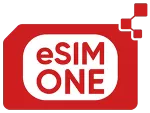How to Buy eSIM for iPhone Complete Setup Guide, Step by Step
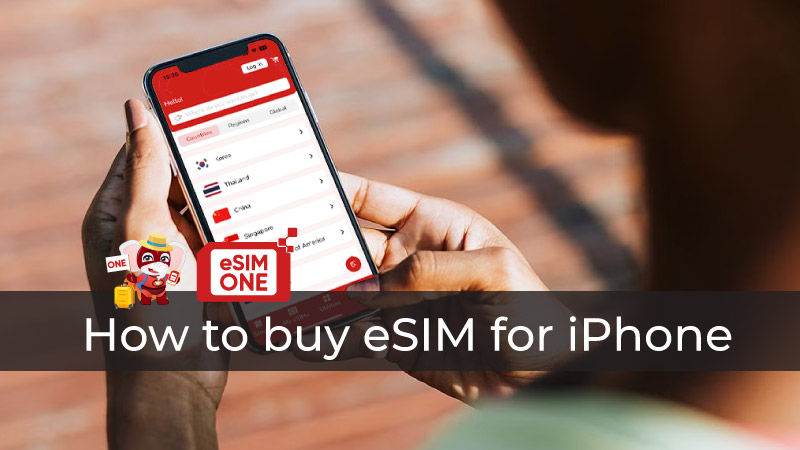 How to buy eSIM for iPhone setup guide 2025
How to buy eSIM for iPhone setup guide 2025
How to buy eSIM for iPhone has never been easier with digital carriers offering instant QR code delivery and seamless integration into Apple's ecosystem. Whether you need global roaming, domestic data plans, or dual-SIM functionality, purchasing and installing an eSIM on your iPhone ensures uninterrupted connectivity. This guide explains step-by-step how to buy, add, and activate an eSIM on your iPhone, including obtaining and scanning the necessary QR code in 2025.
Understanding How to buy eSIM for iPhone and Apple's eSIM Ecosystem
How to buy eSIM for iPhone represents Apple's digital evolution from physical SIM cards to embedded technology integrated directly into device hardware. Apple introduced eSIM support starting with iPhone XS, XR, and all subsequent models through 2025's iPhone 16 series, supporting both primary and secondary cellular lines simultaneously. This technology eliminates physical SIM card requirements while enabling instant carrier switching and international travel connectivity.
Apple's eSIM ecosystem operates through three primary activation methods: eSIM Carrier Activation for direct carrier plans, eSIM Quick Transfer for moving existing lines, and QR code scanning for third-party providers. The integrated approach allows users to maintain up to 20 stored eSIM profiles with two active lines simultaneously on dual-SIM compatible devices. Advanced iOS integration provides seamless switching between personal and business lines without hardware modifications.
The How to buy eSIM for iPhone process leverages Apple's secure enclave technology ensuring encrypted profile storage and authenticated carrier communications. Third-party eSIM providers utilize Apple's standardized APIs for consistent installation experiences across all compatible iPhone models. This standardization enables global eSIM marketplace growth with over 200 providers supporting iPhone activation worldwide.
What Is Apple eSIM Technology and Dual SIM Support
Apple eSIM technology utilizes embedded Universal Integrated Circuit Cards (eUICC) permanently installed in iPhone motherboards. The secure hardware component stores multiple carrier profiles while providing tamper-resistant authentication and encryption capabilities. Unlike traditional SIM cards requiring physical access, eSIM profiles download over-the-air through encrypted channels managed by iOS.
Dual SIM support enables iPhone users to maintain two active cellular connections simultaneously through combinations of eSIM and physical nano-SIM cards. Compatible models include iPhone XS, XS Max, XR, and all subsequent releases through iPhone 16 series. Chinese and Hong Kong iPhone models support dual physical SIM slots instead of eSIM technology due to regional preferences.
Benefits of How do I get eSIM on my iPhone vs Physical SIM
How do I get eSIM on my iPhone offers substantial advantages over traditional physical SIM card usage. Convenience represents the primary benefit—eSIM activation occurs instantly through QR code scanning without requiring store visits or physical card handling. Digital delivery eliminates shipping delays and enables immediate connectivity for international travel or carrier switching.
Security enhancements distinguish How do I get eSIM on my iPhone through tamper-resistant hardware storage and encrypted profile management. Physical SIM cards remain vulnerable to theft, cloning, and unauthorized removal while eSIM profiles require authentication for access or transfer. Remote deactivation capabilities protect against device theft while maintaining account security.
Compatible iPhone Models for How to Add eSIM in iPhone
How to Add eSIM in iPhone requires specific device compatibility starting with iPhone XS, XS Max, and XR models released in 2018. All subsequent iPhone releases support eSIM functionality including iPhone 11 series, iPhone 12 series, iPhone 13 series, iPhone 14 series, iPhone 15 series, and the latest iPhone 16 models. iPhone SE 2nd generation (2020) and iPhone SE 3rd generation (2022) also provide eSIM support.
iOS version requirements mandate iOS 12.1 or later for basic eSIM functionality with enhanced features available in newer iOS versions. iOS 17.4 and later support simplified eSIM activation through direct links and improved QR code management including scanning saved images from Photos app. Regular iOS updates ensure optimal eSIM performance and security.
Regional variations affect eSIM availability—iPhone models sold in mainland China utilize dual physical SIM slots instead of eSIM technology. Hong Kong iPhone models follow similar configurations while other global markets receive standard eSIM-compatible devices.
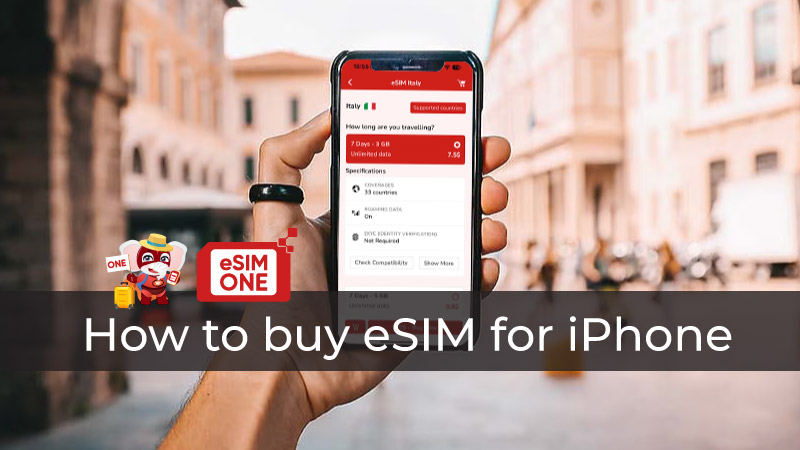 How do I get eSIM on my iPhone compatibility guide
How do I get eSIM on my iPhone compatibility guide
How do I get eSIM on my iPhone: Purchase Options
How do I get eSIM on my iPhone through multiple convenient channels including carrier websites, mobile apps, retail stores, and third-party eSIM marketplaces. Major carriers like AT&T, Verizon, T-Mobile, and international providers offer direct eSIM activation through official apps and websites. Third-party aggregators provide competitive pricing and global coverage options with instant QR code delivery.
The digital-first approach enables How do I get eSIM on my iPhone purchases 24/7 without physical store constraints. Online platforms accept various payment methods including credit cards, digital wallets, and international payment systems. Automated delivery systems provide QR codes within minutes of purchase completion.
Buying eSIM Plans from Carrier Apps and Websites
Major wireless carriers provide native How do I get eSIM on my iPhone support through official mobile applications and web portals. Verizon, AT&T, and T-Mobile offer eSIM Carrier Activation enabling direct plan assignment without QR code scanning. This streamlined process connects eSIM activation to existing account credentials and billing systems.
Carrier app advantages include integrated account management, real-time usage monitoring, and seamless plan modifications. Native iOS integration enables automatic eSIM configuration when upgrading devices or transferring existing lines. Premium carriers provide priority customer support and network access for eSIM subscribers.
In-Store and Retail Partner Purchases
Physical retail locations provide personalized How do I get eSIM on my iPhone assistance for customers preferring face-to-face support. Apple Stores offer eSIM activation services for compatible carriers with immediate technical support and device configuration. Carrier retail stores provide comprehensive eSIM setup including account creation and plan selection.
Authorized resellers including Best Buy, Target, and wireless specialty stores offer eSIM activation services with varying levels of technical expertise. Airport locations provide immediate international eSIM activation for travelers requiring instant connectivity. Retail advantages include hands-on device verification and immediate troubleshooting assistance.
Third-Party eSIM Marketplaces and Aggregators
Third-party eSIM marketplaces provide competitive How do I get eSIM on my iPhone options with global coverage and flexible pricing. Leading platforms include Airalo, Holafly, GigSky, and regional specialists offering destination-specific packages. These aggregators negotiate wholesale rates enabling significant cost savings compared to traditional roaming.
Marketplace advantages include extensive country coverage, transparent pricing, and instant QR code delivery. Advanced platforms provide multi-language support, 24/7 customer service, and comprehensive installation guides. Flexible validity periods accommodate various travel durations without long-term commitments.
Quality varies among third-party providers requiring careful evaluation of customer reviews, network partnerships, and support quality. Premium providers maintain direct carrier relationships ensuring optimal network performance while budget options may utilize secondary arrangements. <span style="color: #0066cc; font-weight: bold;">CarrierApp.com eSIM management portal</span> provides aggregated marketplace comparison and user ratings.
How to Add eSIM in iPhone: Step-by-Step Installation
How to Add eSIM in iPhone follows standardized procedures optimized for user-friendly installation across all compatible models. The process requires stable WiFi connectivity, iOS 12.1 or later, and valid eSIM activation credentials from chosen providers. Installation typically completes within 5-10 minutes including profile download and network configuration.
Modern iOS versions streamline How to Add eSIM in iPhone through enhanced QR code scanning, saved image support, and automatic carrier detection. iOS 17.4 introduced direct link activation eliminating QR code requirements for supported carriers. Advanced users can utilize manual configuration for specialized providers or troubleshooting scenarios.
Accessing eSIM Setup in iOS Settings
How to Add eSIM in iPhone setup begins through iOS Settings app navigation to Cellular or Mobile Service sections depending on regional settings. Users tap "Add eSIM" or "Add Cellular Plan" to initiate installation processes. iOS displays multiple activation options including QR code scanning, carrier app integration, and manual entry.
Settings app organization varies slightly across iOS versions with newer releases providing enhanced eSIM management interfaces. iOS 17+ includes dedicated eSIM sections with improved line labeling and usage monitoring. Multiple eSIM profiles appear with clear identification enabling easy switching between personal and travel lines.
Scanning the How to get QR code for eSIM
How to get QR code for eSIM scanning utilizes iPhone's integrated camera system through Settings app interfaces. Users select "Use QR Code" option and position device cameras to capture provider-supplied QR codes. Optimal scanning requires adequate lighting, steady positioning, and clear QR code visibility.
iOS 17+ supports scanning saved QR code images from Photos app eliminating secondary device requirements. Users tap "Open Photos" after selecting QR code options to browse saved images. This enhancement enables single-device eSIM installation using emailed or downloaded QR codes.
Manual Profile Entry and SM-DP+ Configuration
Manual eSIM installation provides alternatives when How to get QR code for eSIM scanning fails or proves impractical. Users select "Enter Details Manually" from eSIM setup screens to access direct configuration options. Manual entry requires SM-DP+ server addresses and activation codes provided by eSIM suppliers.
SM-DP+ (Subscription Manager Data Preparation) addresses identify secure carrier servers hosting eSIM profiles. Activation codes authenticate specific user purchases enabling profile downloads. Accurate data entry ensures successful installation while errors prevent activation.
Advanced users prefer manual configuration for enhanced security control and troubleshooting capabilities. Manual installation bypasses QR code dependencies enabling activation in challenging environments.
Labeling and Managing Multiple Plans
eSIM line labeling enables How to Add eSIM in iPhone organization for users maintaining multiple active profiles. iOS provides default labels including Primary, Secondary, Personal, and Business with custom naming options. Descriptive labels like "Travel Europe" or "Work Line" improve management clarity.
Multiple eSIM management includes designating default lines for calls, messages, and data usage. Users configure automatic switching based on location, time, or manual selection. Advanced settings enable separate voicemail systems and contact associations for each active line.
Profile storage accommodates up to 20 eSIM profiles with two simultaneously active on dual-SIM compatible iPhones. Inactive profiles remain stored for future activation without reinstallation requirements. 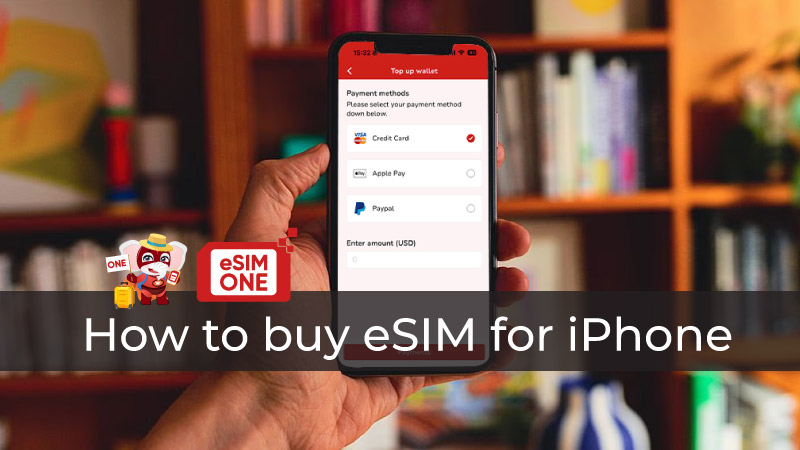 How to Add eSIM in iPhone installation steps
How to Add eSIM in iPhone installation steps
How to get QR code for eSIM: Generation and Delivery
How to get QR code for eSIM occurs automatically upon eSIM purchase completion through provider platforms. Generation typically takes 30 seconds to 5 minutes depending on provider systems and verification requirements. QR codes contain encrypted profile data including network credentials, plan specifications, and activation parameters.
Delivery methods for How to get QR code for eSIM include email, SMS, mobile app notifications, and web portal downloads. Email remains the most common delivery method providing permanent QR code storage and backup access. Advanced providers offer multiple delivery channels ensuring accessibility across various user preferences.
Instant QR Code via Email and App Notifications
Email delivery provides immediate How to get QR code for eSIM access with permanent storage capabilities. Providers send comprehensive activation packages including QR code images, installation instructions, and troubleshooting guides. HTML email formats enable direct QR code display while PDF attachments ensure compatibility across all devices.
Mobile app notifications offer integrated How to get QR code for eSIM management through provider-specific applications. In-app QR code display eliminates email dependencies while providing real-time activation status updates. Advanced apps support direct iPhone Settings integration streamlining installation processes.
Carrier Portal vs App-Based QR Code Retrieval
Carrier web portals provide comprehensive How to get QR code for eSIM management through desktop and mobile browser interfaces. Account-based access enables QR code regeneration, plan modifications, and usage monitoring through unified dashboards. Enterprise portals support bulk eSIM management for corporate deployments.
Troubleshooting QR Code Scanning Issues
Common How to get QR code for eSIM scanning problems include inadequate lighting, camera focus issues, and QR code damage. iOS camera optimization requires stable positioning 6-12 inches from QR codes with adequate ambient lighting. Screen brightness adjustments improve QR code visibility when displaying on secondary devices.
Alternative scanning methods address persistent issues through iOS Photos app integration and manual code entry. Users save QR code images to Photos app then access through eSIM setup screens. Manual installation using SM-DP+ addresses bypasses QR code dependencies entirely.
eSIM Troubleshooting: https://esimone.com/questions/esim-trouble-shooting
Alternative Manual Activation Codes
Manual activation codes provide How to get QR code for eSIM alternatives when scanning proves impossible. Providers supply SM-DP+ server addresses and unique activation codes enabling direct profile installation. Manual entry requires precise data input matching provider specifications exactly.
Code format consistency follows industry standards with SM-DP+ addresses resembling domain names and activation codes using alphanumeric strings. Typical formats include "1$smdp.gsma.com$activation_code" enabling iOS recognition and processing. Accurate transcription prevents installation failures and account lockouts.
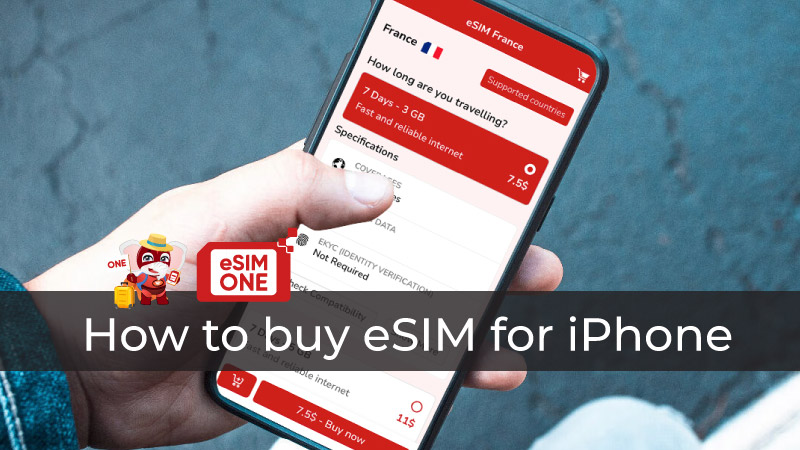 How to get QR code for eSIM delivery methods
How to get QR code for eSIM delivery methods
Best Practices for How to buy eSIM for iPhone and Ongoing Management
How to buy eSIM for iPhone optimization requires strategic planning including provider research, device preparation, and usage monitoring. Best practices begin with compatibility verification, carrier comparison, and backup connectivity planning. Professional users implement eSIM management policies ensuring consistent performance and cost control.
Ongoing How to buy eSIM for iPhone management includes regular usage monitoring, plan optimization, and security maintenance. iOS provides integrated tools for data tracking, line switching, and profile management. Advanced users leverage third-party applications for enhanced analytics and automation.
Switching Between eSIM and Physical SIM Lines
Dual-SIM iPhones enable seamless switching between How to buy eSIM for iPhone profiles and physical SIM cards. Control Center integration provides quick line selection for calls and messages. Settings app configuration designates default lines for different communication types.
Automatic switching intelligence optimizes network selection based on signal strength, roaming costs, and user preferences. iOS learns usage patterns enabling predictive line selection for optimal performance. Manual override options maintain user control when specific line selection is required.
International travel scenarios benefit from intelligent switching between domestic physical SIMs and travel eSIM profiles. Users configure automatic data switching while maintaining home line availability for calls.
Author: Leon
